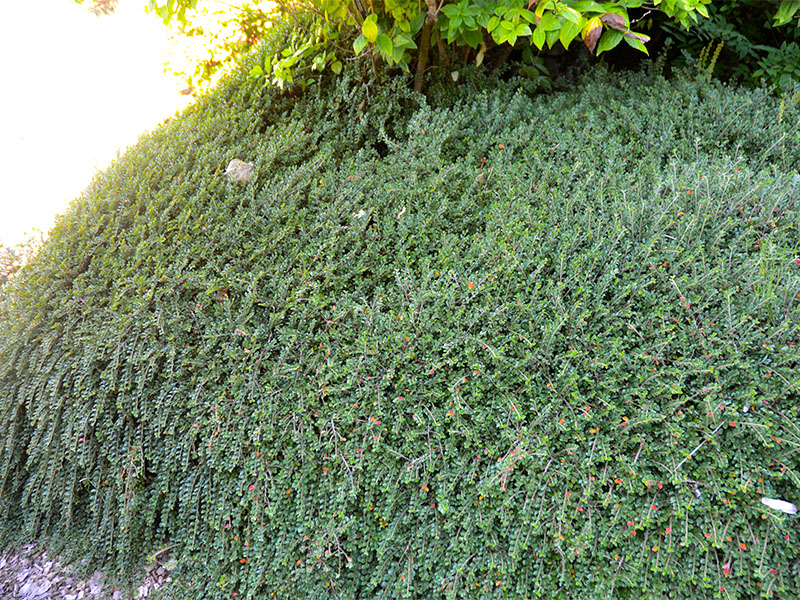
Woody > Cotoneaster > Cotoneaster apiculatus > Cotoneaster apiculatus
Cotoneaster apiculatus
Cranberry Cotoneaster
Mike's
Opinion


"
A commonly used ground cover with small glossy green leaves that are a dominant feature of this plant. It is covered with white flowers in mid-summer and these are followed by its small red, cranberry like fruit. It suffers from winter burn and in my opinion because of this and its ungainly form is a poor choice for the landscape.
Michael Pascoe, NDP., ODH., CLT., MSc. (Plant Conservation)
"
| Family |
| Rosaceae |
| Genus |
| Cotoneaster |
| Species |
| apiculatus |
| Category |
| Woody |
| Type |
| Shrub (deciduous) |
| Pronunciation |
| USDA Hardiness Zone |
| 4-7 |
| Canadian Hardiness Zone |
| 4 |
| Temperature (°C) |
| -29 to -34 |
| Temperature (°F) |
| -20 to -30 |
| Height |
| 1 m |
| Spread |
| 1.25 m |
Photographs
Description and Growing Information
Flowering Period
| General Description |
| Low, wide spreading shrub with stiff branching habit. |
| Cultivation |
| Moist, well drained soil but will grow in any situation except those that are permanently wet. |
| Shape |
| Low, mounded |
| Growth |
| Slow |
| ID Characteristic |
| Small glossy green leaves. |
| Pests |
| Mites in dry condition and in winters with little snow cover, winter burn. |
| Flower/Leaf Bud Description |
| Similar to C. lucidus except smaller. |
| Leaf Description |
| Alternate, simple, suborbicular to orbicular-ovate, .5-2 cm long and wide, apiculate. |
| Flower Description |
| Perfect, pinkish, solitary, small. |
| Fruit Description |
| Pome, 0.5 - 2 cm in diameter, rounded, cranberry red August through September, borne singly. |
| Colour Description |
| Dark glossy green in summer changing to a good bronzy red tone in autumn. |
| Texture Description |
| Fine in leaf but often course in winter. |
| Propagation |
| Seeds should be scarified in acid for 60 minutes then provided 60 plus days at 5°C. Softwood cutting root easily if treated with 1000 to 3000 ppm IBA, quick dip and placed in peat/perlite or sand under mist. |
